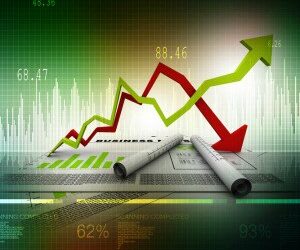Schroders is quite confident that fixed income is set to be a standout asset class in 2023, but the volatility in the market environment is expected to persist amid slowing growth and still-too-high inflation.
Schroders Australia’s head of fixed income, Stuart Dear, noted last week that although inflation in 2022 rose to levels not seen since the early 1980s, triggering a negative impact on the bond market, “there is now reason to be optimistic about the outlook for the fixed income asset class”.
“As well as the material possibility of high-quality fixed income delivering strong returns this year, partly erasing last year’s losses, it should also be a good diversifier as we enter the down phase of the cycle. Riskier assets appear to be still priced for relatively benign macro outcomes,” Mr Dear opined.
“The fact that yields have repriced sharply higher means that forward-looking returns from bonds are now significantly better. For now, the income is back in fixed income.”
Looking to government bonds, Mr Dear assessed that determining their value is a “fine art”.
“Two of the most common bond valuation methods are estimating the ‘fair value’ level of bond yields given medium-term macroeconomic inputs and comparing bonds to equities and making a relative assessment,” Mr Dear said.
He assessed that using both of these methods, “bonds are ‘cheap’ at their current levels”.
“There is no question that high quality bonds now offer attractive absolute and relative value, and a compelling medium-term risk-adjusted return,” Mr Dear said.
Similarly, his colleague, Schroders Australia’s portfolio manager for fixed income and multi-asset, Mihkel Kase, said the next few months could potentially be a sweet spot for fixed income as yields in investment grade debt have already risen, prior to any economic slowdown.
While Schroders does expect a “period of volatility”, Mr Kase said the asset manager believes “the rebuilding of yields across most investments means that these markets will be able to deliver income and expected improved returns to investors”.
“Bonds tend to do best when growth is falling, inflation is softening, and central banks are easing policy,” Mr Kase said.
“While we may not see all three in 2023, Schroders believes at least two out of three are likely.”
As such, he recommended investors consider taking advantage of “attractively priced fixed income markets” over the next few months as opportunities present.
Earlier this year, UBS Asset Management’s head of fixed income, Charlotte Baenninger, similarly acknowledged that yields on fixed income assets have finally turned positive.
With income now returning to the fixed income space, she suggested that investors have a number of reasons to be optimistic.
“Over the long term, yield is by far the most stable and reliable component of total return for bonds,” Ms Baenninger said.
“Over the past 20 years, yield (income) has been the dominant driver of total returns in bond portfolios. For certain asset classes such as high yield and emerging markets, price return has been negative over the long term yet performance has been positive and very strong, demonstrating the power of yield.
“Despite the large role yield plays in total return, it only contributes a minor proportion towards total return volatility.”
Moreover, Ms Baenninger noted that investors no longer need to take unnecessary credit risk to reach yields.







